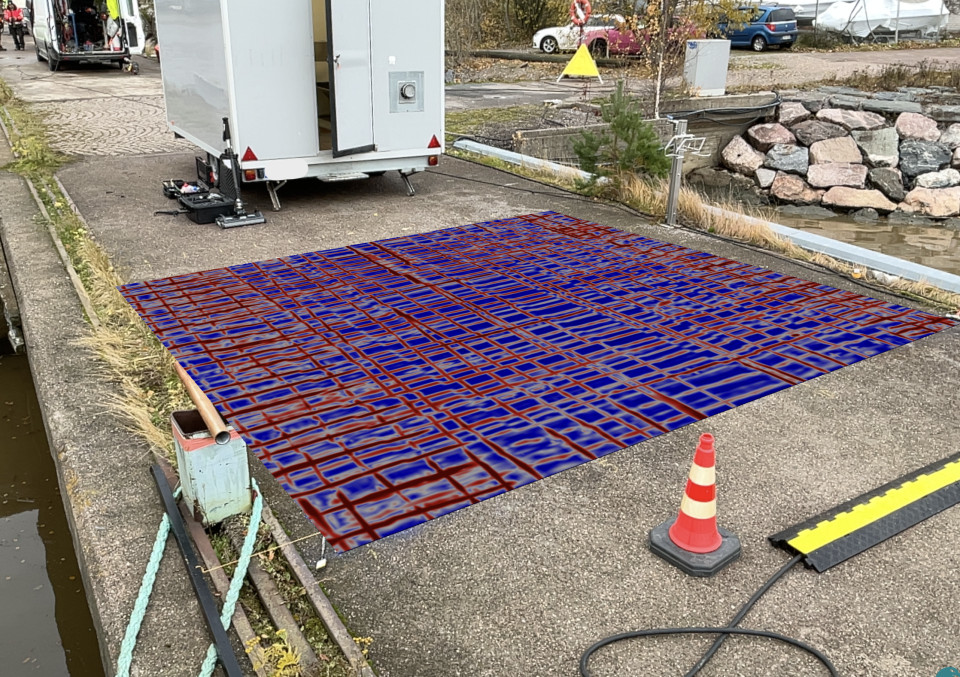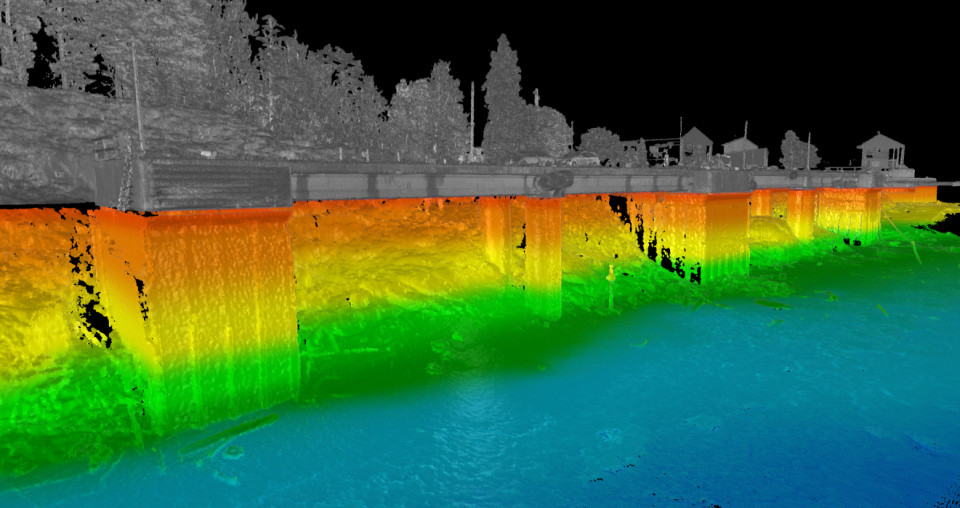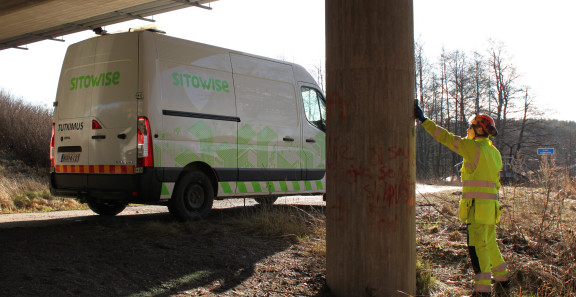Based on the general inspection, it can be determined that there is a need for a special inspection, in which case in addition to visual observations, more detailed examinations of the structures are carried out. NDT examinations can be used to investigate, for example, internal damage to structures or to verify the conformity of structures to plans. If initial data, such as reinforcement drawings, are missing from the structures, they can be produced by with NDT studies and small structural spot openings.
- For example, a special inspection was carried out on the Kipparlahti pier in Herttoniemenranta, Helsinki, by Sitowise's experts, during which NDT studies were also used to examine the load-bearing structures of the eight-section reinforced concrete beam pier. The aim of the special inspection was to determine the current condition of the pier in terms of its structural elements, concrete structures and surface structures, and to assess any necessary repair needs and their costs, says Jukka Hietikko, Department Manager at Sitowise.
The condition of the pier, completed in 1959, was in worse condition than expected, and a comprehensive report on its damage, including proposals for action, was prepared for the pier holder, i.e. the City of Helsinki.
- The condition survey was very good, extensive and thorough. We received significant information related to the project, and the research carried out steered the project in the right direction. The condition survey played a crucial role in planning the future, says Lasse Toivanen, Project Director at the City of Helsinki.
The NDT inspection investigated the internal damage to the pier, the conformity of the reinforcement with the plans and the method of implementation where no drawings of the structures were available.

After a special inspection of various structures, the current condition of the pier structure is reliably known, and thus it is possible to decide on the necessary further measures, such as restrictions on use or weight, repairs or replacement. Often, on the basis of a special inspection, the service life of the inspected structure can be extended when the actual condition of the structure is reliably known.
Especially for this purpose, the research was good and the work was carried out commendably by dedicated experts.
Lasse Toivanen, City of Helsinki
Underwater construction inspections go deeper than the surface
The underwater structures of the Kipparlahti pier and the bottom topography of the surroundings were measured with multibeam sounding. The accuracy of the location of the data was improved and the material was further processed for inspection.
The underwater structural inspections were carried out with Sitowise's measuring boat and underwater sample drilling by divers. The structures below the surface were measured with a multibeam sonar and those above the surface were measured with a laser scanner as a mobile measurement.

More notable underwater observations were detachments and irregularities in the formwork of coffin structures in concrete surfaces near the waterline. Formwork had been loosened in large areas, especially near the waterline, and loose planks had piled up at the bottom level at the base of the structures. In some places, the formwork planking is partially detached from the surface of the structure. Irregularities of concrete surfaces near the waterline indicate weathering and casting defects. In addition, objects such as logs, planks and tyre fenders detached from the pier were observed in the bottom area under and in front of the pier.
Multibeam scanning enables faster, more detailed and safer inspection of structures than diving. The turbidity or flow of water does not interfere with the measurement results. Repeated measurements also make it possible to monitor changes in the structure over the years. With the help of 3D models, an accurate overall picture of the condition of the structures can be obtained, and after the measurements, it is possible to carry out other special inspections as needed.
The most typical NDT inspections are elderly concrete structures that have already been damaged
The maintenance services of bridges and structures cover the monitoring of the condition of structures, action programming and the planning and implementation of repair investments.
In the studies of the pier structures in Kipparlahti, the services offered by Sitowise were combined in a customer-oriented and very cost-effective manner so that the customer was left with a clear picture of the necessary follow-up measures.
Sitowise offers a very wide range of services for the inspection and design of massive pier structures, taking into account customer needs.
The most typical NDT inspections subjects are especially elderly concrete structures that have already been damaged, of which interesting ones are, for example, challenging post-tensioned structures such as bridges. In addition, Sitowise inspects both new and old load-bearing CIP structures, precast concrete parts or foundations. Inspections can be carried out on all main building materials, such as steel, concrete and wood structures. Samples removed from the structure can be examined, for example: cracks, compressive and tensile strength, chloride content, depth of carbonation, degrees of weathering, etc. on the basis of which the condition of structures and the future life cycle can be assessed, and future repair measures and their cost estimates can be defined.

